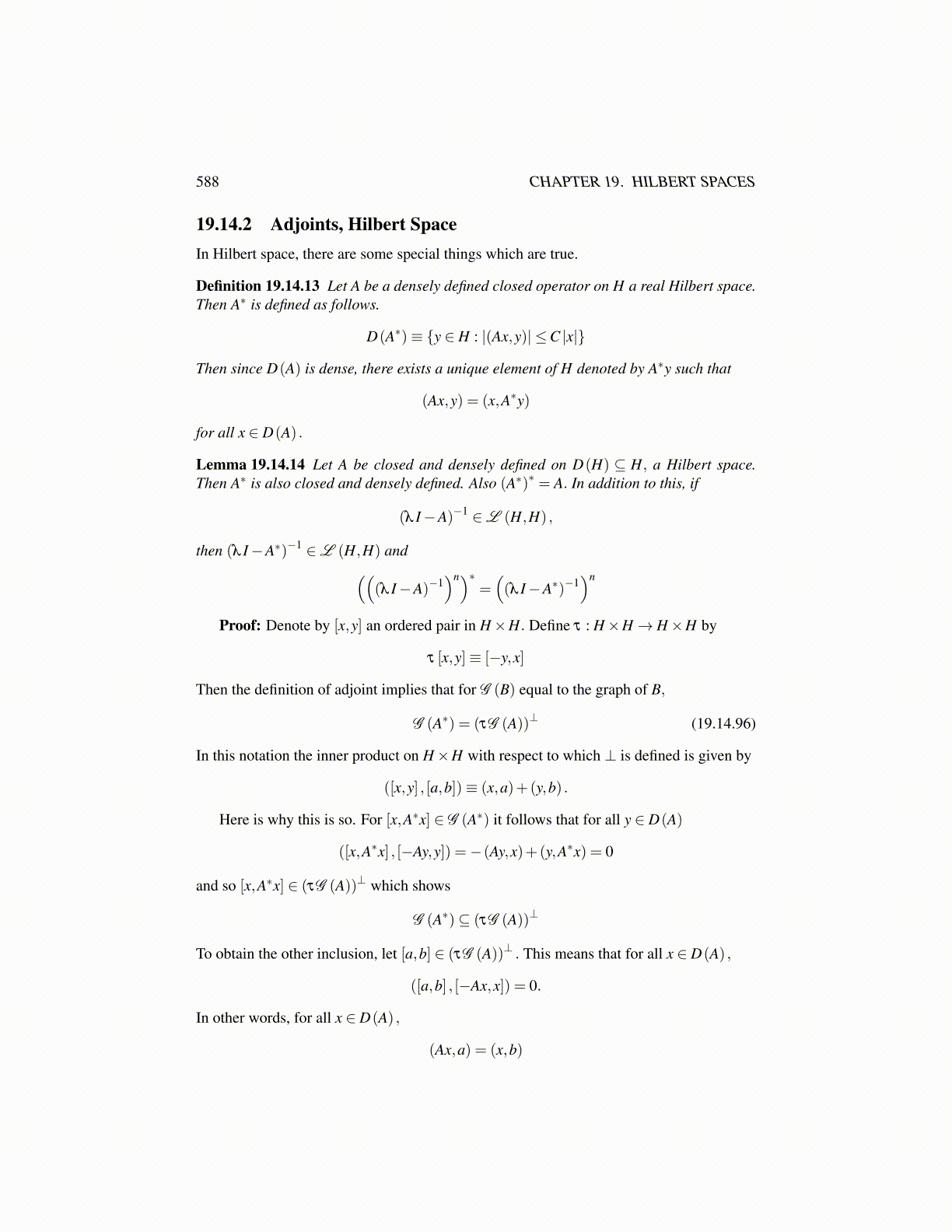
588 CHAPTER 19. HILBERT SPACES
19.14.2 Adjoints, Hilbert SpaceIn Hilbert space, there are some special things which are true.
Definition 19.14.13 Let A be a densely defined closed operator on H a real Hilbert space.Then A∗ is defined as follows.
D(A∗)≡ {y ∈ H : |(Ax,y)| ≤C |x|}
Then since D(A) is dense, there exists a unique element of H denoted by A∗y such that
(Ax,y) = (x,A∗y)
for all x ∈ D(A) .
Lemma 19.14.14 Let A be closed and densely defined on D(H) ⊆ H, a Hilbert space.Then A∗ is also closed and densely defined. Also (A∗)∗ = A. In addition to this, if
(λ I−A)−1 ∈L (H,H) ,
then (λ I−A∗)−1 ∈L (H,H) and(((λ I−A)−1
)n)∗=((λ I−A∗)−1
)n
Proof: Denote by [x,y] an ordered pair in H×H. Define τ : H×H→ H×H by
τ [x,y]≡ [−y,x]
Then the definition of adjoint implies that for G (B) equal to the graph of B,
G (A∗) = (τG (A))⊥ (19.14.96)
In this notation the inner product on H×H with respect to which ⊥ is defined is given by
([x,y] , [a,b])≡ (x,a)+(y,b) .
Here is why this is so. For [x,A∗x] ∈ G (A∗) it follows that for all y ∈ D(A)
([x,A∗x] , [−Ay,y]) =−(Ay,x)+(y,A∗x) = 0
and so [x,A∗x] ∈ (τG (A))⊥ which shows
G (A∗)⊆ (τG (A))⊥
To obtain the other inclusion, let [a,b] ∈ (τG (A))⊥ . This means that for all x ∈ D(A) ,
([a,b] , [−Ax,x]) = 0.
In other words, for all x ∈ D(A) ,
(Ax,a) = (x,b)